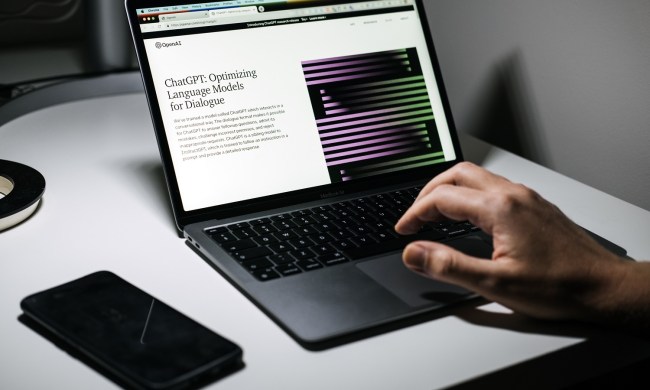GPT-4 is the latest language model for the ChatGPT AI chatbot, and despite just being released, it’s already making waves. The new model is smarter in a number of exciting ways, most notably its ability to understand images, and it can also process over eight times as many words as its predecessor. It’s a lot harder to fool now as well.
You’ll need to pay to use the new version though, as for now, it’s locked behind the ChatGPT Plus subscription.
How do you use GPT-4 and ChatGPT?

The easiest way to access ChatGPT is through the official OpenAI ChatGPT website. There’s a lot of interest in it at the moment, and OpenAI’s servers regularly hit capacity, so you may have to wait for a spot to open up to use it, but just refresh a few times and you should be able to gain access.
If you don’t want to wait, you can sign up for a ChatGPT Plus subscription. That gives you priority access, and you should be able to use ChatGPT whenever you want if you’re a paid member. However, there is a waitlist for new subscribers at this time, so you may have to wait a little while anyway.
You’ll also need to sign up if you want to use GPT-4. The default, free version of ChatGPT is currently running GPT 3.5, a modified version of the GPT3 model that’s been in use since 2020. GPT-4 is, for now, a subscriber-only feature, though as it sees greater development, it may well become more widely available.
What can GPT-4 do better than ChatGPT?
GPT-4 is a next-generation language model for the AI chatbot, and though OpenAI isn’t being specific about what changes it’s made to the underlying model, it is keen to highlight how much improved it is over its predecessor. OpenAI claims that it can process up to 25,000 words at a time — that’s eight times more than the original GPT-3 model — and it can understand much more nuanced instructions, requests, and questions than GPT-3.5, the model used in the existing ChatGPT AI.
OpenAI also assures us that GPT-4 will be much harder to trick, won’t spit out falsehoods as often, and is more likely to turn down inappropriate requests or queries that could see it generate harmful responses.
But GPT-4 also has some exciting new abilities that early adopters are already putting to good use.
GPT-4 can understand images
GPT-4 is a multimodal language model AI, which means it can understand text and other media, like images. This might sound familiar if you’re had a go with Stable Diffusion AI art generation, but it’s more capable than that, as it can respond to images and queries. This has led to some exciting uses, like
It’s getting much better at programming
ChatGPT has already shown itself a capable programmer, but GPT-4 takes it to a while new level. Early users have managed to get it to make them basic games in just a few minutes. Both Snake and Pong were recreated from scratch, despite the users having next to no experience with programming.
It can pass exams
ChatGPT was good at acting like a human, but put it under stress, and you could often see the cracks and the seams. But with GPT-4, that’s much less likely to happen. In fact, it can perform so well on tests for humans that
GPT-4 can create its own lawsuits
The combination of improved reasoning and text comprehension has a lot of potential for the DoNotPay team. It’s working on using GPT-4 to generate “one-click lawsuits,” where robocallers would be sued if they spam you. Such a system could also be used to scan medical bills and identify errors, or compare prices with other hospitals to help get bills down. It could then even draft a legal defense using the No Surprises Act.
It can understand humor
GPT-4 is much better at understanding what makes something funny. Not only can it tell better jokes when asked, but if you show it a meme or other funny image and ask it to explain what’s funny about it, it can understand what’s going on and explain it to you.
GPT-4 limitations
Like ChatGPT before it, GPT-4 isn’t perfect. It’s certainly a worthy competitor for Google Bard, but it still has a ways to go before it doesn’t make mistakes at all and can do just about anything.
At the time of writing, GPT-4 is trained on data that was collected up until August 2022, so it has no knowledge beyond that date. That creates severe limitations on what the AI can do, and means that as time goes on, it becomes less accurate due to lacking the most up-to-date information.
Like its predecessor language models, GPT-4 is also prone to “hallucinations,” where it claims inaccurate information as fact. This reportedly happens a lot less with this model, but it’s not immune, raising concerns over its use in accuracy-sensitive environments. It’s also quite limited in its ability to learn from experience, so it may continue to make the same errors, even when they are pointed out to it.
GPT-4 is currently limited to 100 messages every four hours, even for ChatGPT Plus subscribers, and if you aren’t already a member, you’ll have to join the waitlist and state your reasons for wanting to use it.



